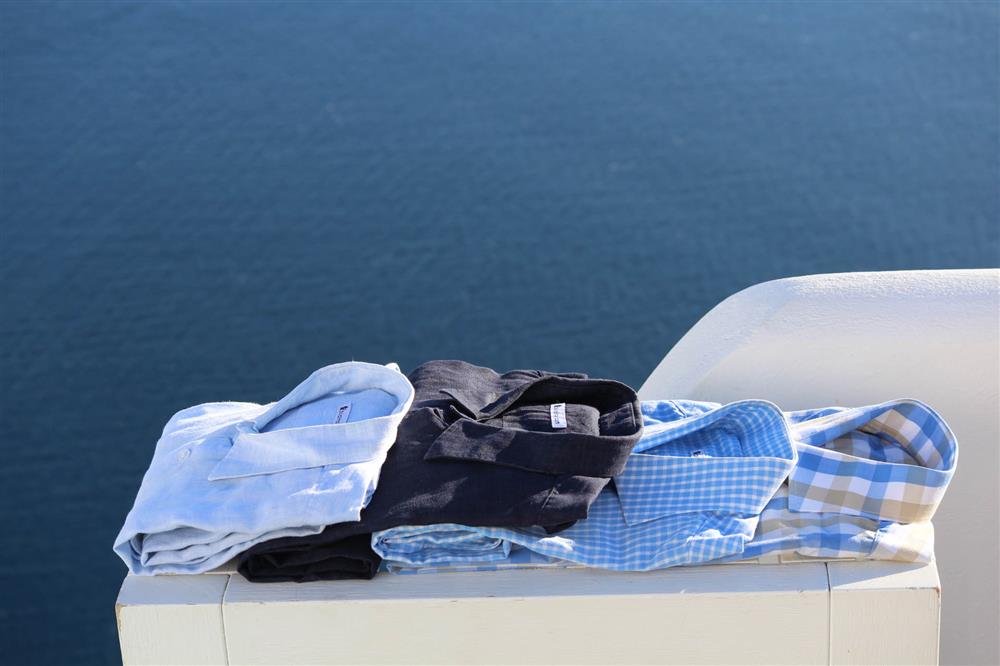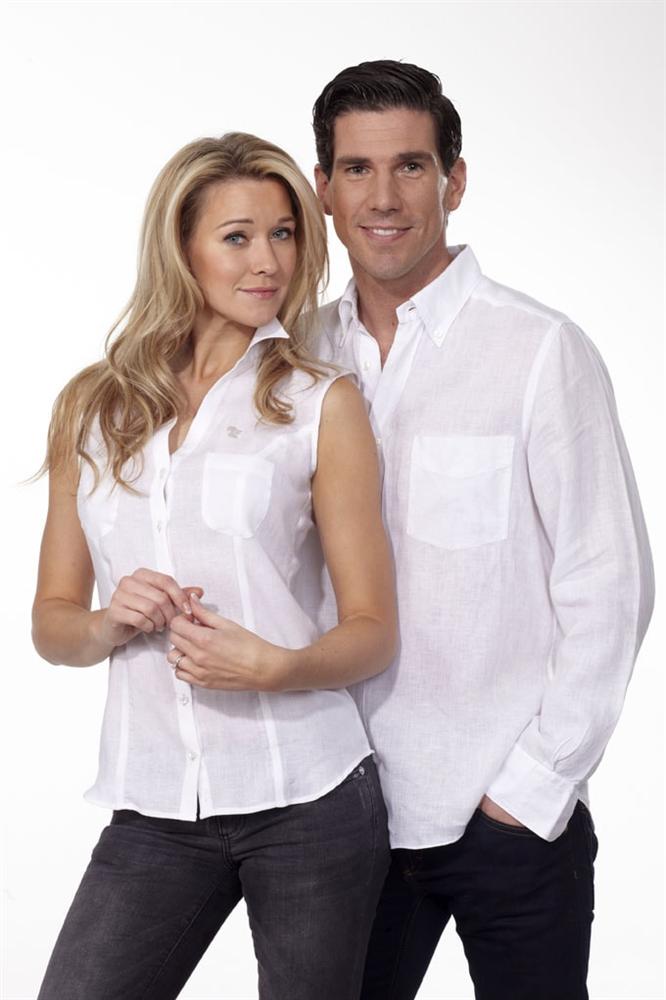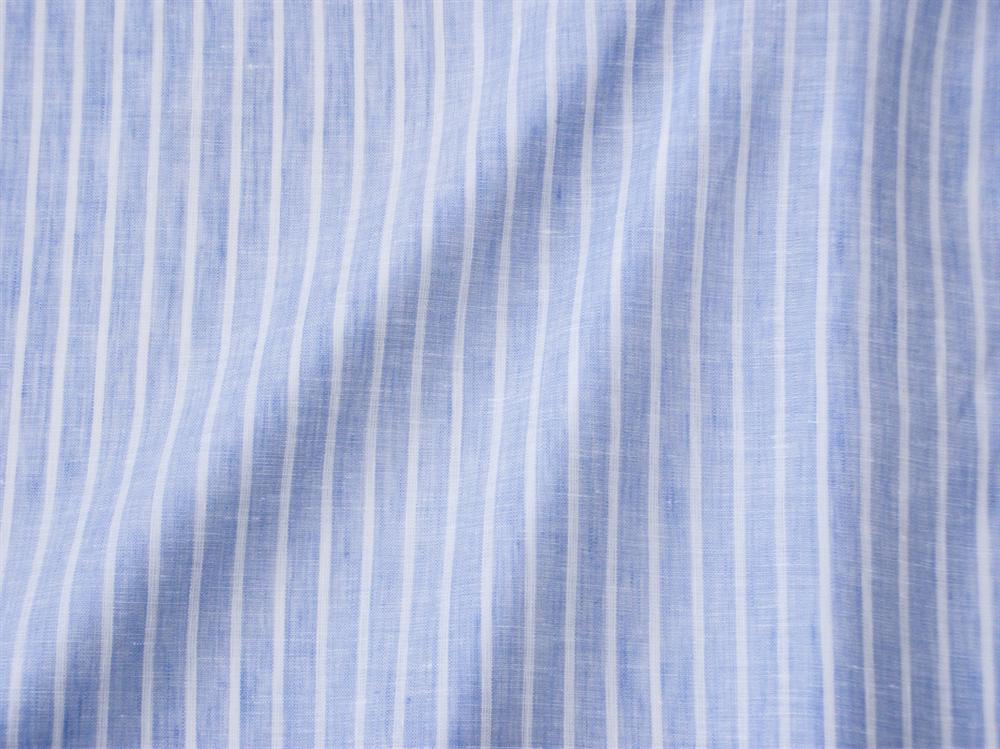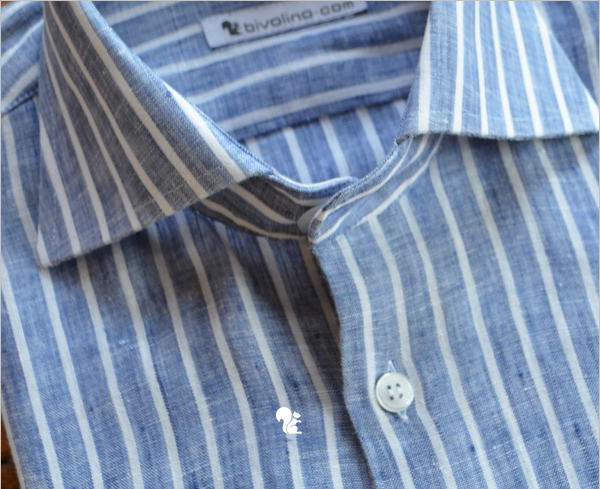Linen Shirt-Linen for men shirting
Linen Fabrics for shirting

Linen fabrics are incredibly breathable and, like seersucker, typically made to be worn in hot climates. Linen is made from fiber of the flax plant, and can be very labor intensive to produce. Typically linen will be more loosely woven and sheer than most cotton shirts, and has a very unique dry hand to it that is unlike cotton. Linen also tends to wrinkle more easily than cotton and generally feels much more relaxed because of this. While we love the look and feel of linen, some people prefer cotton/linen blended shirts as you can achieve much of the coolness of a linen shirt while reducing the wrinkling.
Linen is a textile made from the fibers of the flax plant. Linen is laborious to manufacture, but the fiber is very absorbent and garments made of linen are valued for their exceptional coolness and freshness in hot weather.
Many products are made of linen: aprons, bags, towels (swimming, bath, beach, body and wash towels), napkins, bed linens, tablecloths, runners, chair covers, and men's and women's wear.
The word linen is of West Germanic origin and cognate to the Latin name for the flax plant, linum, and the earlier Greek ????? (linón). This word history has given rise to a number of other terms in English, most notably line,from the use of a linen (flax) thread to determine a straight line.
Textiles in a linen weave texture, even when made of cotton, hemp and other non-flax fibers, are also loosely referred to as "linen". Such fabrics generally also have their own specific names, for example fine cotton yarn in a linen-style weave is called Madapolam.

Linen is a bast fiber
. Flax fibers vary in length from about 25 to 150 mm (1 to 6 in) and average 12–16 micrometers in diameter. There are two varieties: shorter tow fibers used for coarser fabrics and longer line fibers used for finer fabrics. Flax fibers can usually be identified by their “nodes” which add to the flexibility and texture of the fabric.The cross-section of the linen fiber is made up of irregular polygonal shapes which contribute to the coarse texture of the fabric.
Linen fabric feels cool to touch, a phenomenon which indicates its higher conductivity (the same principle that makes metals feel "cold"). It is smooth, making the finished fabric lint-free, and gets softer the more it is washed. However, constant creasing in the same place in sharp folds will tend to break the linen threads. This wear can show up in collars, hems, and any area that is iron creased during laundering. Linen has poor elasticity and does not spring back readily, explaining why it wrinkles so easily.
Linen fabrics have a high natural luster; their natural color ranges between shades of ivory, ecru, tan, or grey. Pure white linen is created by heavy bleaching. Linen fabric typically varies somewhat in thickness and is crisp and textured, but it can in some cases feel stiff and rough, and in other cases feel soft and smooth. When properly prepared, linen fabric has the ability to absorb and lose water rapidly. Linen can absorb a fair amount of moisture without feeling unpleasantly damp to the skin, unlike cotton.
Linen is a very durable, strong fabric, and one of the few that are stronger wet than dry. The fibers do not stretch, and are resistant to damage from abrasion. However, because linen fibers have a very low elasticity, the fabric eventually breaks if it is folded and ironed at the same place repeatedly over time.
Mildew, perspiration, and bleach can also damage the fabric, but it is resistant to moths and carpet beetles. Linen is relatively easy to take care of, since it resists dirt and stains, has no lint or pilling tendency, and can be dry-cleaned, machine-washed or steamed. It can withstand high temperatures, and has only moderate initial shrinkage.
Linen should not be dried too much by tumble drying, and it is much easier to iron when damp. Linen wrinkles very easily, and thus some more formal garments require ironing often, in order to maintain perfect smoothness. Nevertheless, the tendency to wrinkle is often considered part of linen's particular "charm", and many modern linen garments are designed to be air-dried on a good clothes hanger and worn without the necessity of ironing.
A characteristic often associated with linen yarn is the presence of "slubs", or small knots which occur randomly along its length. In the past, slubs were traditionally considered to be defects, and were associated with low quality linen. However, in the case of many present-day linen fabrics, particularly in the decorative furnishing industry, slubs are considered as part of the aesthetic appeal of an expensive natural product. In addition, slubs do not compromise the integrity of the fabric, and therefore they are not viewed as a defect. However, the very finest linen has very consistent diameter threads, with no slubs at all.
What is the meaning of linen cloth?
Thread made from fibers of the flax plant. b. Cloth woven from this thread. 2. alsolinens Articles or garments, such as sheets, tablecloths, or underwear, formerly made of linen and now usually made of other fabrics, especially cotton.
Is linen more expensive?
Why Linen, of course! ... Why is linen generally a more expensive fabric? Because the plant (Flax) needs more nurturing, and producing the relatively long fibers to make into yarn and weave is a more difficult process than something like cotton.
Is linen sustainable?
The Pros of Linen. Linen is one of the most biodegradable and stylish fabrics in fashion history. It is strong, naturally moth resistant, and made from flax plant fibres, so when untreated (i.e. not dyed) it is fully biodegradable.
Is linen fabric man made or natural?
Four major natural fibers and 23 man-made fibers are available. Natural fibers come from plants and animals. The plant fibers---cotton and linen---are made of cellulose. ... Two classes of man-made fibers are those adapted from cellulose (cellulosic) and those made entirely of chemicals (noncellulosic).
Renz 1 Fabric:

What are the advantages of linen?
Advantages of Linen. By far the best women's clothing fabric for coolness and comfort in warm weather and hot climates is that made from 100% Linen. This natural fabric absorbs perspiration, allows the skin to breathe, and better allows the air to circulate round the body.
How do you care for linen?
Linen becomes softer and more absorbent after each wash, which is pretty neat. Washlinen on low temperatures in lukewarm or cold, and preferably soft, water. Use the gentle machine cycle and a mild detergent to protect the fibres. Again, read the individual manufacturer's care instructions to be sure.

Do linen shirts shrink?
Washing Your Linen Clothing. ... Linen, much like cotton, does have a tendency toshrink. For that reason, avoid washing linen clothes in hot water and opt for either warm or cold water; if your linen is a vibrant or dark color, stick with cold to avoid fading.
Can you dry a linen shirt?
Linen shirts and pants can be machine-washed in a gentle cycle in warm water, or preferably, hand-washed or dry-cleaned. Repeated hand or machine washings makelinen soft, thereby eventually reducing wrinkling, while dry cleaning keeps it crisp and new-looking.
Can you put a linen shirt in the dryer?
Make the drying temperature low and remove the garment while it is still slightly damp. Always try to dry your linen clothes flat. Hangers or clothespins can cause marks on the fabric and also cause deformation of the garment. If there is a need for ironing, iron your linen clothes while slightly damp.
How do you iron a linen shirt?
- Take your wrinkled linen and lay it on your ironing board. I made sure my test subject was good and wrinkled.
- Wet an old t-shirt or cotton towel under the faucet. Wring enough that it's still damp but not dripping wet. ...
- Iron over the cotton on the highest heat. I leave it on the highest steam setting too.
Do you have to iron linen shirts?
Spritz the surface of your clothes with water from a spray bottle. If your linen item is damp, the iron presses the fibers quickly and removes stubborn wrinkles faster. Also,ironing your damp linen clothing prevent the iron from burning or yellowing the fabric.
What is the difference between cotton and linen?
o It is thicker than cotton and linen fiber has variable lengths, most of which are very long. This contributes to strength, which contributes to longevity. Linen lasts a very long time. The strength of cotton is achieved through spinning multiple fibers into yarn and weaving the yarn into fabric.
From the men’s collection https://www.bivolino.com/en/men-shirts-linnen
From the women’s collection https://www.bivolino.com/en/women-blouses-casual
Linen Shirt - Linen Shirt








